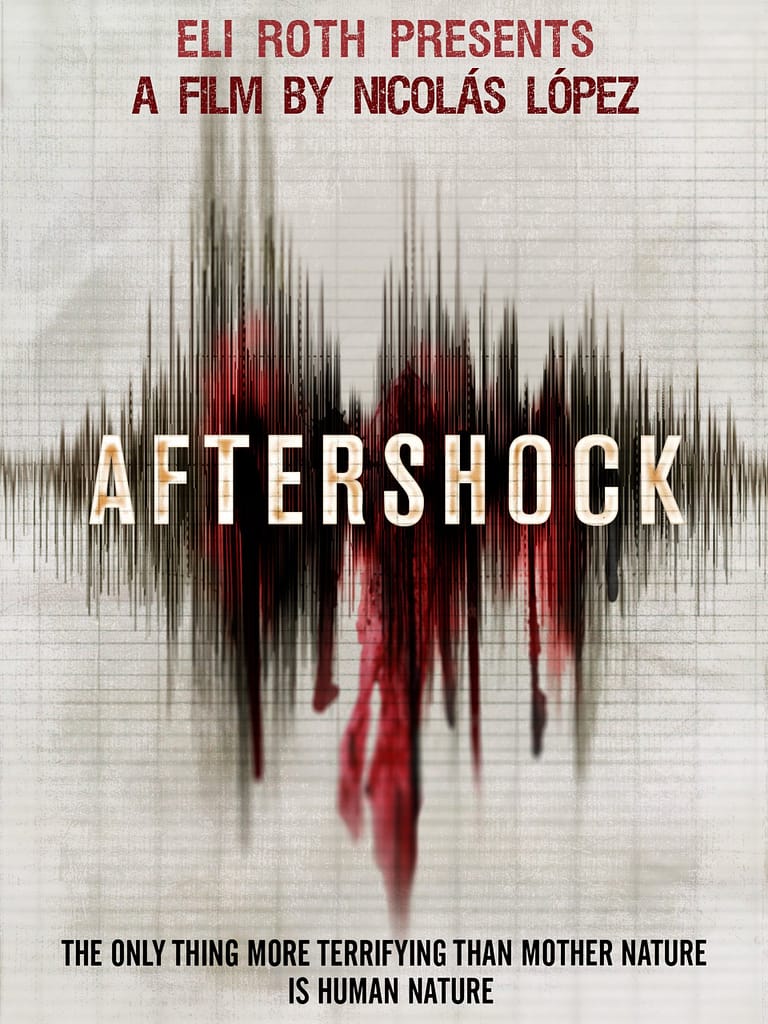My quick rating – 5.1/10. Eli Roth’s Aftershock is one of those odd cinematic curiosities that’s been parked on my rewatch list for a while, mostly because I remembered it as a mixed bag of travelogue beauty, brutal carnage, and shaky-cam disaster chaos. And after finally diving back in, that impression still holds, with a few new takeaways.
The film starts off deceptively light. The first thirty minutes play more like a tourist’s vlog than a horror thriller, with Roth and his companions bar-hopping and sightseeing through the colorful streets and seaside charm of Valparaíso, Chile. It’s here that the film flexes some unexpected strengths: gorgeous location work and a surprisingly mellow vibe that lulls you into a false sense of security. There’s even a blink-and-you’ll-miss-it appearance from a young Selena Gomez, playing a snobby VIP girl who brushes off the main crew in a club. It’s a fun little cameo that adds to the “before-the-storm” atmosphere.
Then the earthquake hits—and that’s when Aftershock shifts gears entirely.
The quake itself is chaotic and loud, but not always convincing. A lot of the destruction feels like it was achieved by shaking the camera, throwing dust into the air, and telling the actors to scream louder. Still, the sound design helps carry the weight, especially when the bass kicks in and the walls start to buckle. It’s not quite San Andreas, but given the modest budget, they did a decent job selling the panic and unpredictability of a city suddenly falling apart.
What sets Aftershock apart from other disaster flicks, however, is what comes next. The local prison collapses, unleashing a wave of escaped inmates into the already unstable landscape. This is where things could’ve really taken off. Unfortunately, the film only dips its toe into the potential horror of that premise. The convicts become a violent presence, yes, but not a deeply explored one. There’s little time for psychology or dread—just brutality and bloodshed.
Thankfully, when it comes to the violence, Roth doesn’t hold back. The deaths are harsh, sudden, and creatively cruel, in true Roth fashion. There’s a raw, unpolished energy to the carnage that suits the desperation of the scenario, and it’s clear that Roth and director Nicolás López were pushing their limited resources as far as they could go.
The finale deserves some credit for having teeth. It avoids the neat, safe wrap-up you’d expect from a more mainstream film, and while the ending might leave some viewers cold, I appreciated its willingness to be bleak.

Aftershock isn’t a great film. It’s messy, uneven, and often feels like two movies stitched together: a travel doc and a disaster-horror hybrid. But it is an interesting one. Roth’s presence in front of and behind the camera gives it just enough edge to keep it from flatlining. With a bigger budget and tighter focus (especially on the prison escape chaos), it could’ve been something special. As it stands, it’s a decent disaster flick with a mean streak, and sometimes, that’s enough.
Amazon and a few other streamers have this one, including Plex for free.
Log in to manage Simkl watchlist



